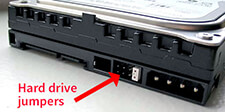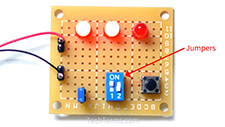Jumper
A jumper is a small metal connector that acts as an on/off switch. Multiple jumpers are often used together to configure settings for a hardware device. Some jumpers are encased in a plastic switch, that can be toggled on or off. Other jumpers are plastic sleeves with metal linings that connect two metallic prongs together. When the sleeve is applied, the connection is on and it when it is removed, the connection is off.
Jumpers are found in computer hardware as well as other types of electronic devices. A motherboard, for instance, may include jumpers that are used to enable different types of components. Hard drives commonly include jumpers that can enable or disable different features. For example, one jumper setting might enable spread spectrum clocking (SSC) while another setting might enable PHY or "physical layer" mode. These settings may be required for the hard drive to work with specific types of hardware.
Jumpers are also found in common household electronics, such as remote controls. For example, a garage door remote may include a row of jumpers. These jumpers must match the settings of the garage door receiver in order for it to work. Ceiling fan remotes often include jumpers that can be customized to match the settings for a specific fan. Modifying the jumper settings of a remote typically changes the frequency on which it communicates. This allows you to use different frequencies for different devices.
While altering jumpers might seem like a high-tech process, it is usually very easy. Remotes, for example, typically have jumpers right next to the battery so they can easily be switched on or off. Just make sure that you know how to correctly modify the jumper settings before changing them. If you modify the wrong jumpers, the device might not work.
 Test Your Knowledge
Test Your Knowledge
